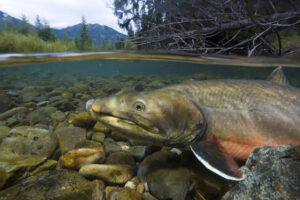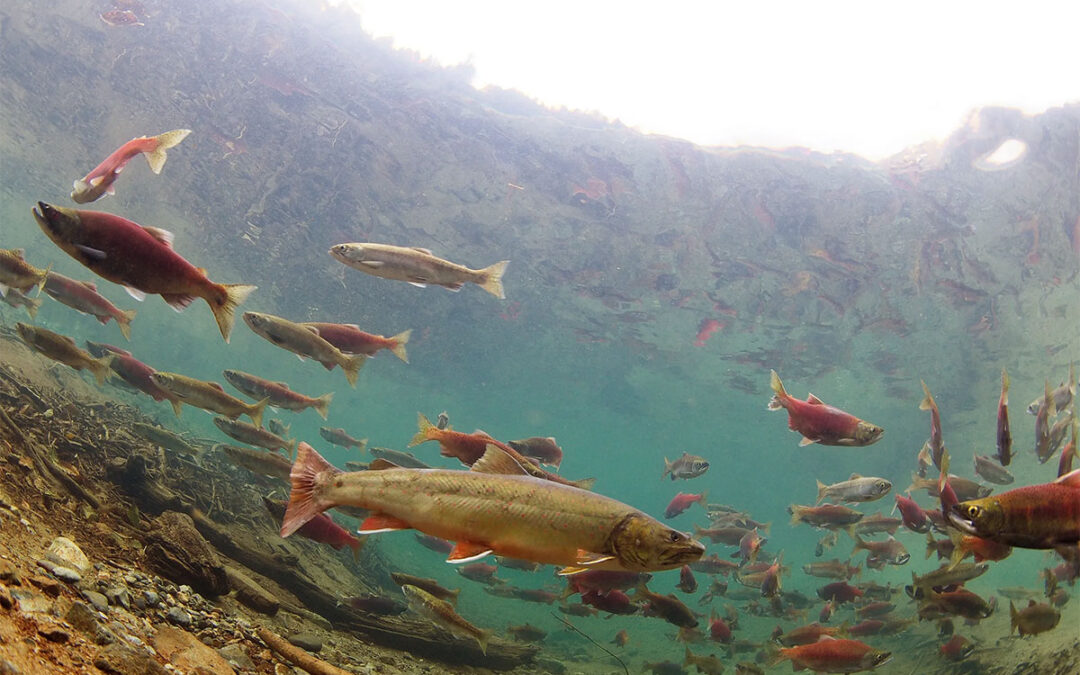Bull Trout by U.S. Fish and Wildlife Service
Bull trout lost approximately 60 percent of their historic range before they were even listed as ‘threatened’ on the Endangered Species List in 1998. Yet the Forest Service wants to bulldoze and clearcut some of Montana’s few remaining, most pristine, bull trout watersheds that flow out of the Great Burn of 1910 area. Given the bull trout’s struggle against extinction, we’re going to court to halt this highly destructive project.
The Alliance for the Wild Rockies filed a lawsuit on August 22 in federal district court in Missoula challenging the Redd Bull 2 logging project in the Superior Ranger District of the Lolo National Forest west of St. Regis, Montana.
The challenged decision authorizes logging on 6,408 acres, including 4,903 acres of clearcutting with individual clearcuts up to 973 acres (more than 1.5 square miles) in size in Federally Designated Bull Trout Critical Habitat. Add to that the intentional burning and 1,404 acres of commercial thinning, and this is a recipe for more sedimentation, less shade, and hotter, dirtier streams — the exact opposite of what bull trout require for their very survival.
Bull trout’s precipitous decline is primarily due to a number of human-caused impacts. These include habitat degradation and fragmentation; blockage of migratory corridors by roads, culverts and/or dams; poor water quality from sediment and/or pollutants; competition and predation due to the introduction of non-native fish; impoundments and water diversions.
Global warming is increasingly heating the cold water that bull trout need to survive. Yet the Forest Service is doing the opposite of what it should be doing as required by the Endangered Species Act to maintain and restore bull trout since they were listed as ‘threatened’ 26 years ago.
The science is very clear and undisputed. To live and successfully reproduce, bull trout require very specific habitat parameters that are best summed up by the Five Cs.
• Clean water with very little fine sediment in the stream bottom. Fine sediment fills the spaces in the spawning gravel which restricts oxygen flow and smothers bull trout eggs.
• Cold water. Bull trout will only spawn in the fall when water temperatures fall to 48 degrees F. If water temperatures rise above 59 degrees F it restricts migration and use of available habitats since the trout will avoid those warmer waters.
• Complex streams with intact riparian vegetation to provide shade, woody debris, bank stability, clean gravel and cobble substrate, gentle stream slopes and deep pools.
• Connected watersheds that allow the fish to migrate to and from their small spawning streams and mature in lakes or rivers, traveling up to 150 miles. They return to the streams where they were spawned, but unlike salmon, bull trout do not die after spawning and make the return journey between stream and lake many times in their life.
• Comprehensive protection and restoration of bull trout habitat must be done throughout the range of this native fish.
The Forest Service’s Fisheries Effects Analysis document notes the Little Joe Watershed is considered one of the most important bull trout spawning reaches not only in the Redd Bull project area, but potentially even the entire Middle Clark Fork River bull trout core area.
The effects to bull trout will stem from the 23.5 miles of log haul roads that will dump sediment into occupied bull trout critical habitat (6 miles in Ward Creek, 8.5 miles in North Fork Little Joe, and 9 miles in Dry Creek). When heavy log trucks drive on dirt roads next to a stream they push a lot of sediment from the road into the stream.
The Forest Service’s own sediment modeling shows additional sediment would be caused by more logging roads, bulldozing open overgrown roads, building new roads, and increasing traffic. But the Forest Service also acknowledges that they have limited success at reducing sediment delivery into streams which destroys bull trout habitat.
We don’t like having to have to go to court over and over to force a recalcitrant government agency to follow the law and do its job under the Endangered Species Act. But the Forest Service plans to continue to destroy bull trout habitat through deforestation, road-building, and intentional burning over vast areas.

Bull Trout, U.S. Fish and Wildlife Service
The result? The agency’s actions are causing bull trout populations in Montana, which is one of the last refuges for these native fish, to slide inexorably into extirpation and extinction—and we will not allow that to happen without a fight.
If you think clean water, bull trout and bull trout critical habitat are worth fighting for please consider helping us protect bull trout habitat.
Mike Garrity is the Executive Director of the Alliance for the Wild Rockies.
